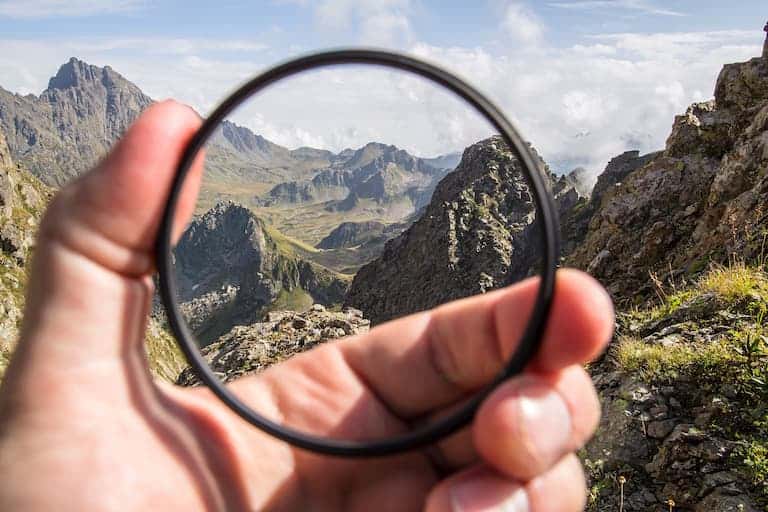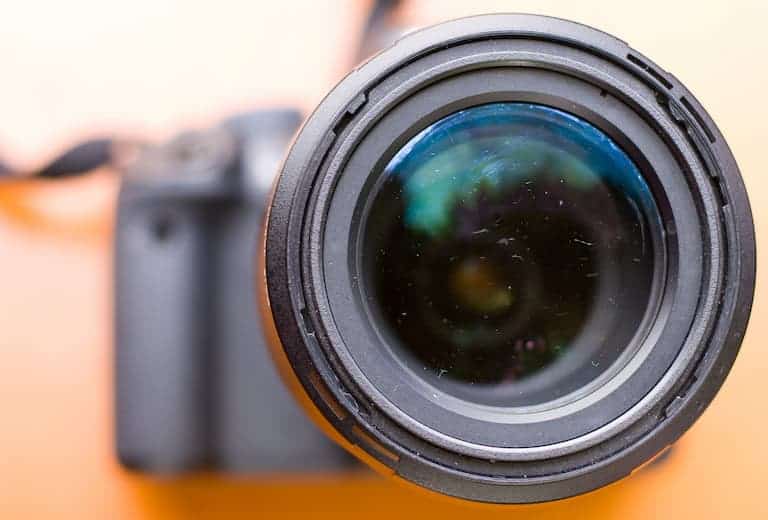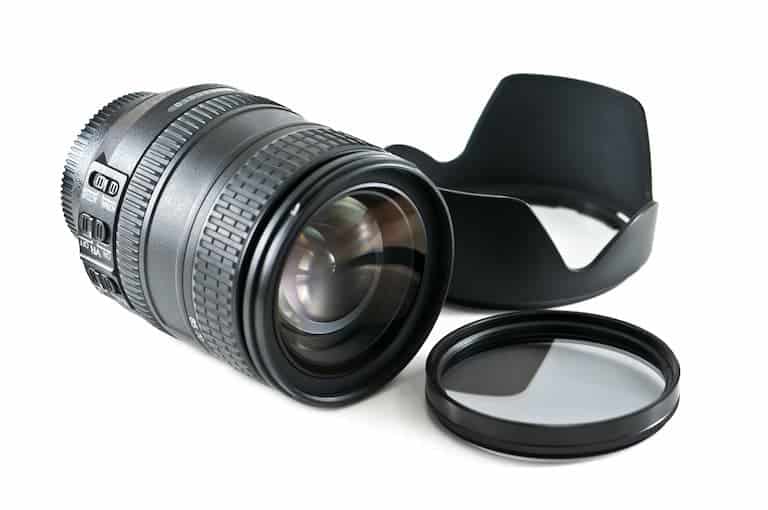Most photographers will do anything they can to protect their camera lenses from damage. That’s where camera lens protectors come in, but do they affect picture quality?
Lens protectors can affect picture quality in a number of ways. Cheap protectors aren’t entirely transparent and are prone to yellowing. If the protector isn’t installed correctly, this can lower the picture quality as well.
Before you decide whether you should buy a lens protector or not, let’s look at how they may affect the picture quality of your photos.
Table of Contents
How Do Lens Protectors Change Picture Quality?
Lens protectors can change picture quality by creating glare, diminishing clarity, and adding a slight color tint to the final photo. Protectors may also create a slight blurring effect in photos. These effects are typically a result of improper installation.
Lens Protectors May Not Be Truly Transparent
One of the main ways that camera lens protectors can affect picture quality is by not being fully transparent. This is because they’re usually made of tempered glass, which isn’t perfectly clear. This means that the pictures you take may not be as sharp and clear as they’d be without the lens protector.
However, the decrease in picture quality may not be very noticeable at all. For most photographers, this trade-off is worthwhile. The best lens protectors will be well-made. As a result, the glass will stay very clear for a long period of time.

Lens Protectors May Not Be Installed Perfectly
Another way that camera lens protectors can affect picture quality is through improper installation. If there’s even a tiny gap between the edge of the lens protector and the camera lens, it can cause light to leak in and create a glare in your photos.
To avoid this, make sure that you choose a high-quality lens protector and that you follow the instructions carefully when installing it. With a little bit of care, you can make sure that your lens protector is installed perfectly and that your photos will be unaffected.
Scratches on the Glass Will Be Noticeable
A big way that camera lens protectors can affect picture quality is by scratching the glass. A lens protector may add an extra line of defense to protect your lens from damage, but any scratches will be visible. This is because scratches will reflect light differently and cause a glare in your photos.
To avoid this, choose a lens protector made of high-quality tempered glass. Tempered glass is more resistant to scratching. It’s also less likely to show any scratches that do occur.

Certain Lens Protectors Diminish Image Clarity
While camera lens protectors may not be fully transparent, the best ones will still allow you to take clear pictures. However, some factors can affect the clarity of your photos. One of these factors is the thickness of the glass. The thicker the glass, the more likely the protector is to cause a decrease in picture quality.
Another factor is the type of coating that’s applied to the glass. Some coatings can cause a slight decrease in clarity and are generally unnoticeable. If you’re worried about picture quality, make sure to choose a lens protector with a thin layer of tempered glass and no additional coating.
Protectors May Create Image Glare
One of the most common ways that camera lens protectors can affect picture quality is by causing glare. Glare occurs when light reflects off the glass’s surface and creates a wash of bright light in your photo. It can be very distracting and make your photos look less clear.
To avoid this effect, choose a lens protector with an anti-glare coating. This will help to reduce the amount of light that reflects off of the surface of the glass and cause glare.
Low-Quality Protectors Turn Yellow Over Time
One of the less common ways that camera lens protectors can affect picture quality is by turning yellow over time. This is because some types of plastic and glass can change color when exposed to UV light. The yellowing is usually only noticeable if you compare a photo taken with a yellowed lens protector to one taken without one.
To avoid yellowing, make sure to choose a lens protector made of high-quality tempered glass. Tempered glass is less likely to turn yellow over time and will help to keep your photos looking clear. Cheaper products are more prone to this behavior.
Unclean Area During Installation Can Damage the Lens
If the area around the camera lens isn’t clean when you install the lens protector, the picture quality may be affected. This is because dirt and dust can get trapped between the lens protector and the camera lens. These small particles can cause scratches and damage to the camera lens.
To avoid this, clean the area around the camera before you install the lens protector. A simple wipe with a soft cloth should do the trick. Ensure that there’s no dirt or dust on the surface before you apply the adhesive.
Lens Protectors May Not Be Completely Colorless
While most camera lens protectors are entirely colorless, some may have a slight tint. This is usually not noticeable, but it can affect picture quality if you’re taking photos in low-light conditions. The tint can cause a slight loss of clarity and contrast.
To avoid this, make sure to choose a lens protector with clear tempered glass, as this is more likely to have less color. This will help to keep your photos looking clear and bright, even in low-light conditions.
Protectors May Cause Blurring in Photos
Another way that camera lens protectors can affect picture quality is by causing blurring. This is usually only an issue if the lens protector isn’t installed correctly. If it’s not placed flush against the camera lens, it can create a slightly blurred effect in your photos.
To avoid this, make sure to install the lens protector correctly. Take care to ensure that it’s placed flush against the camera lens and that there are no gaps. If you aren’t sure how to install a lens protector, there are plenty of tutorials online.
Conclusion
Camera lens protectors are a great way to keep your camera lens safe from scratches and damage. However, they can also affect picture quality in a number of ways.
Make sure to choose a high-quality lens protector and take care when installing it to avoid any issues.

